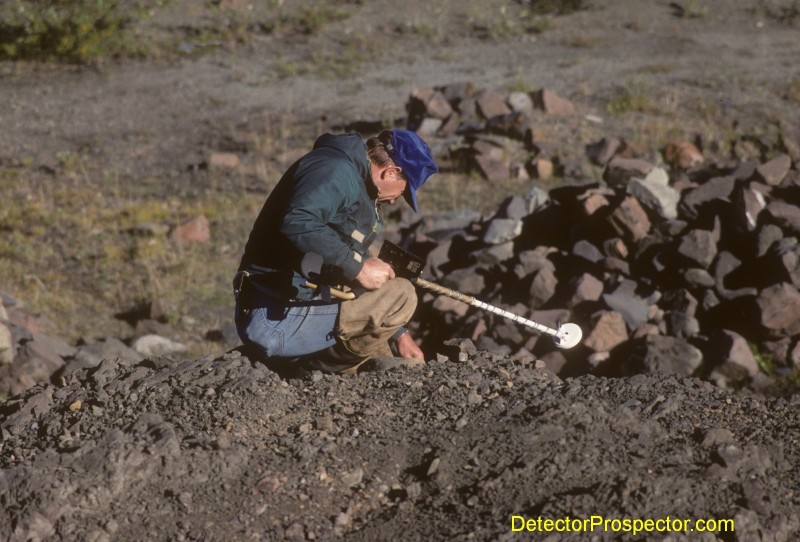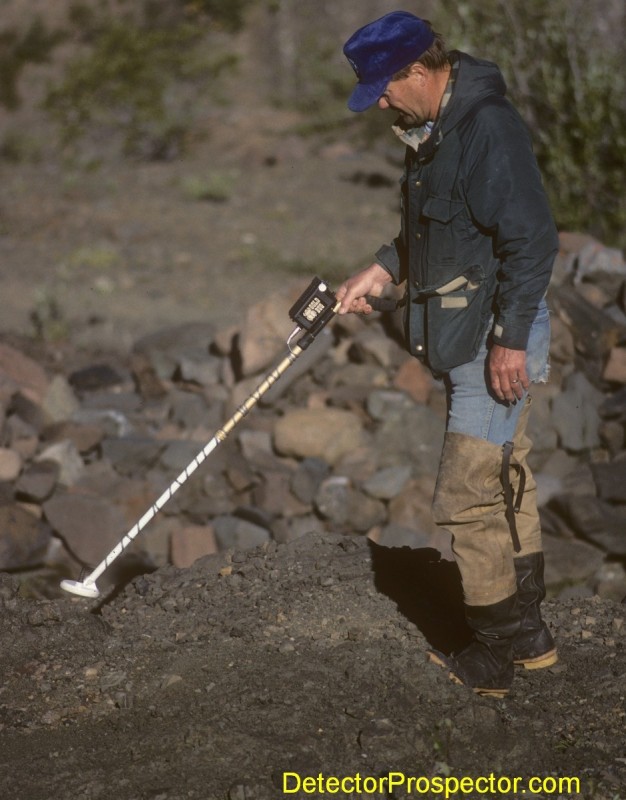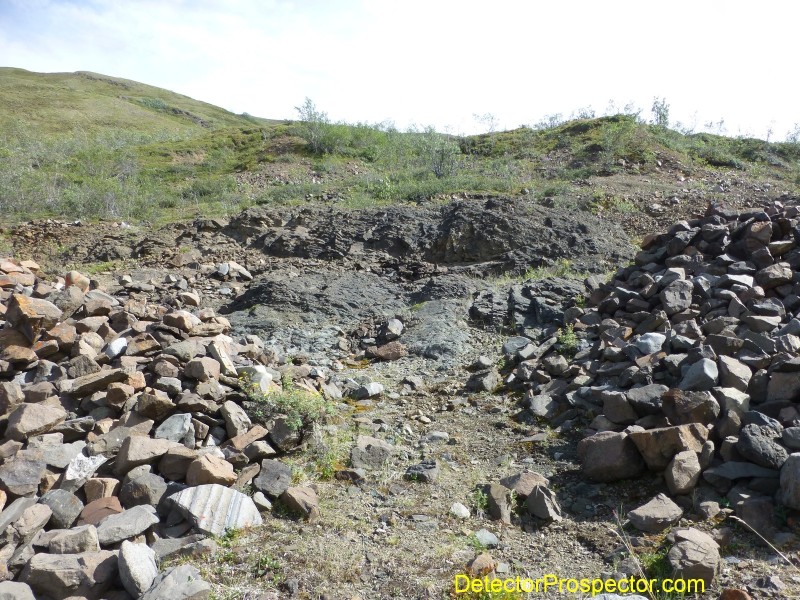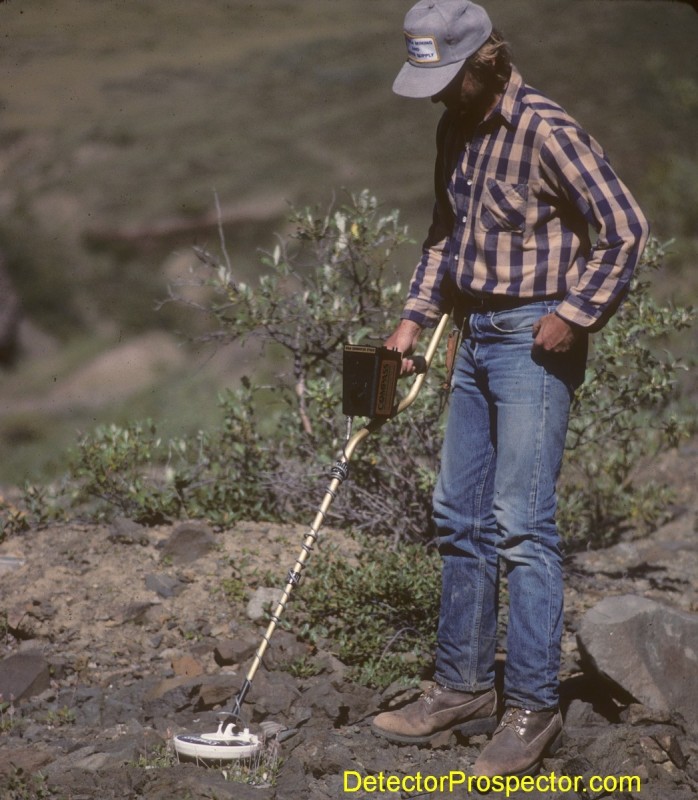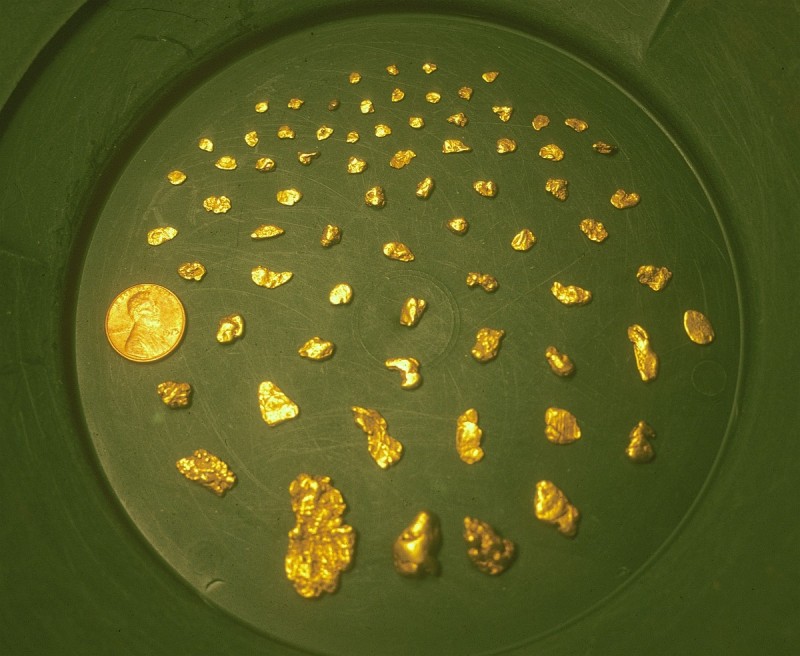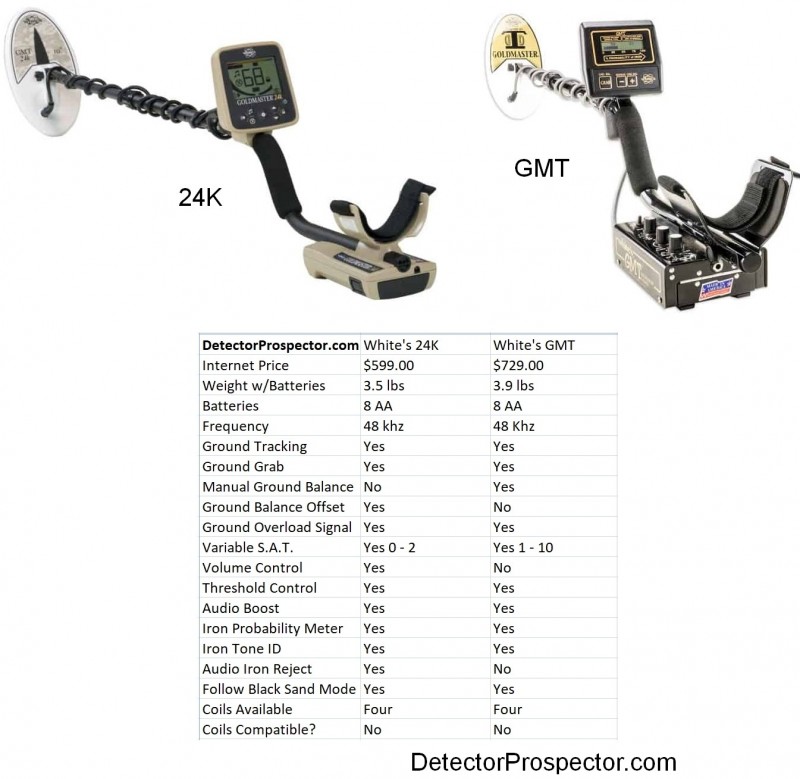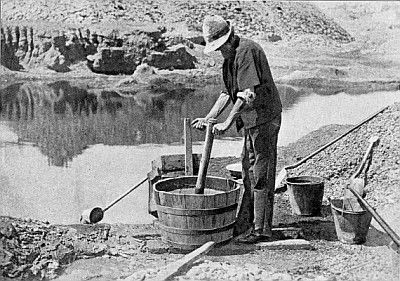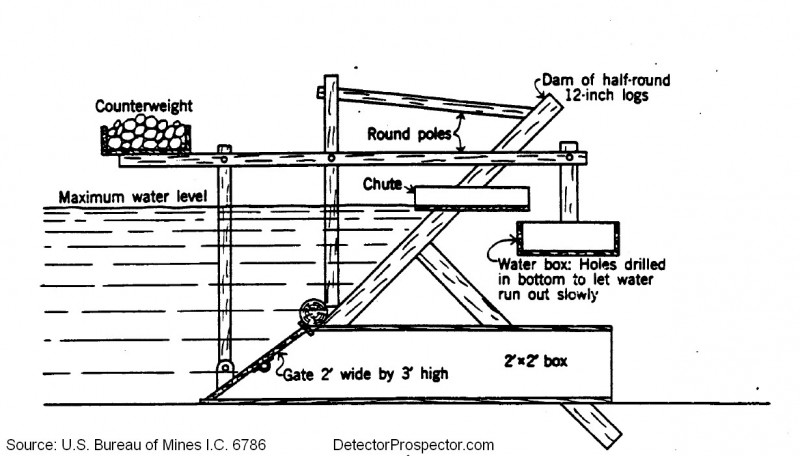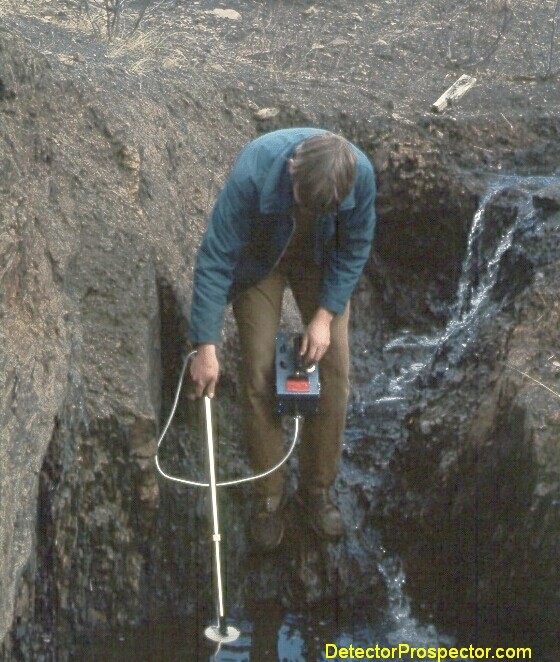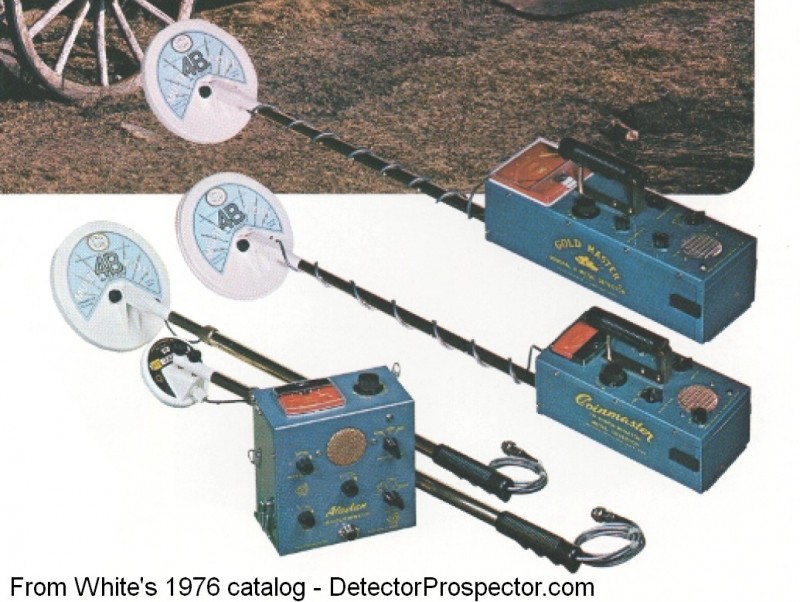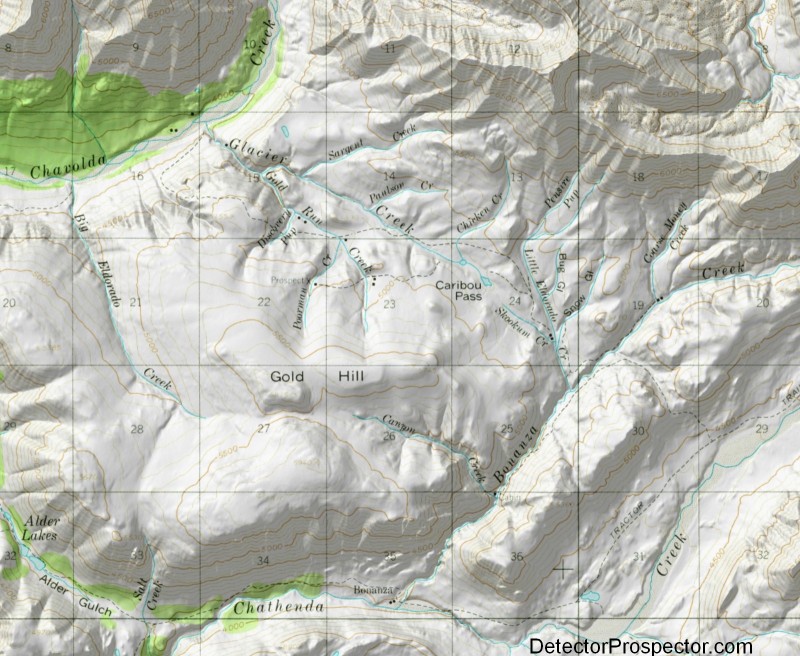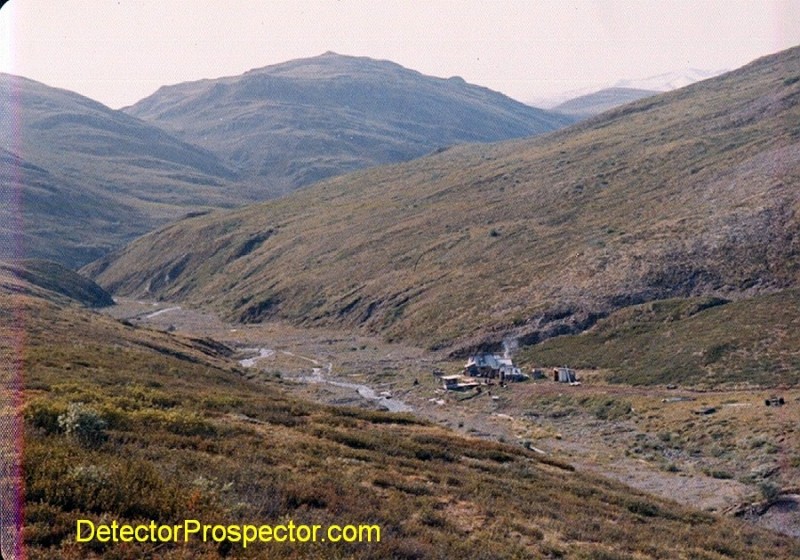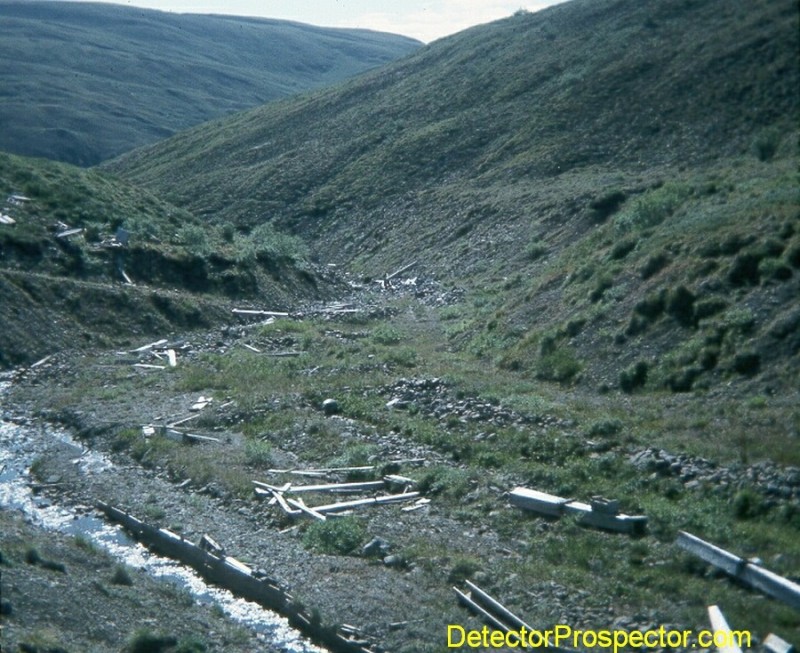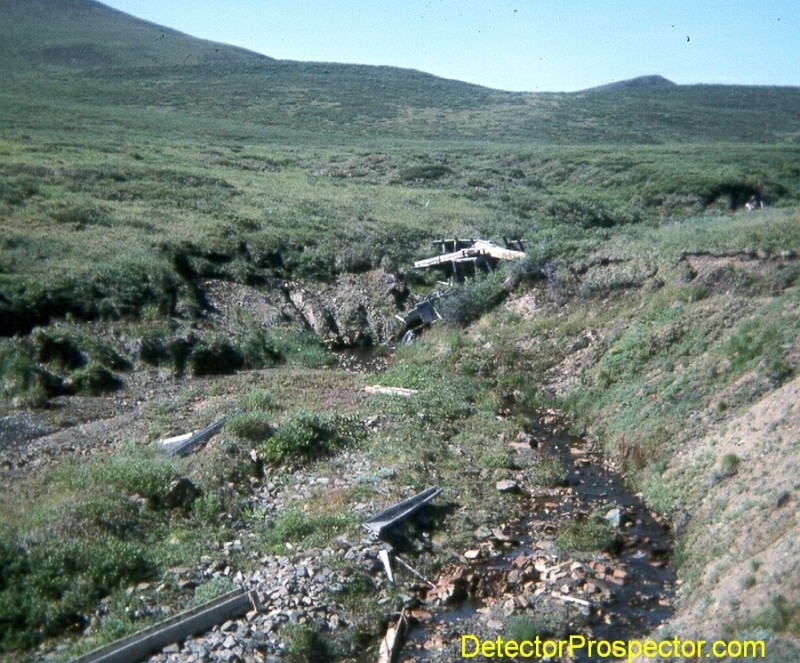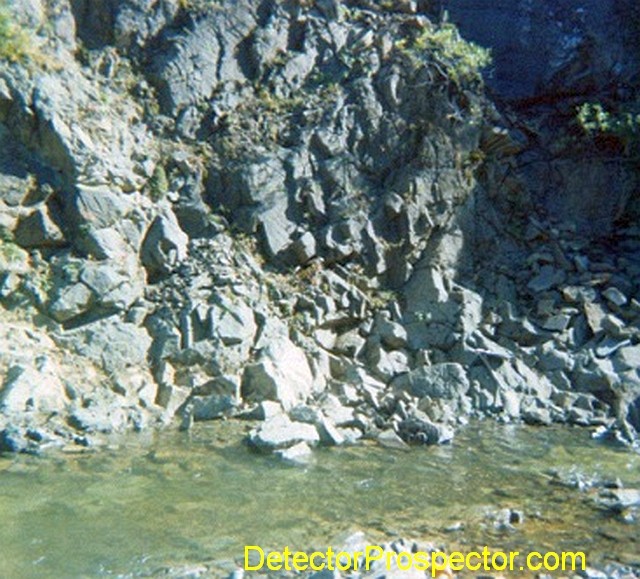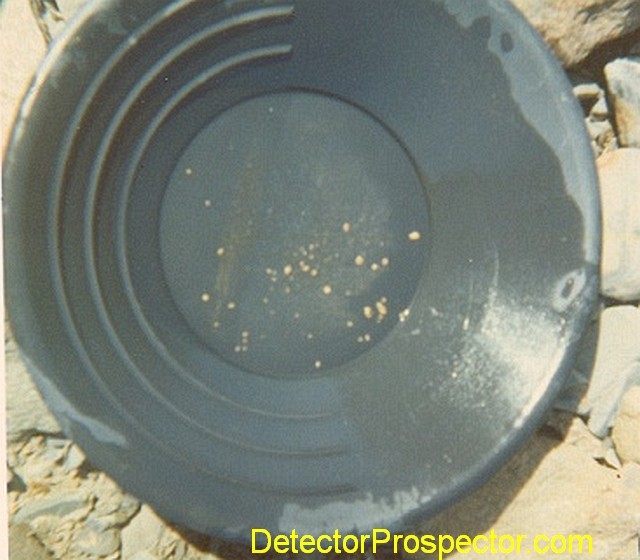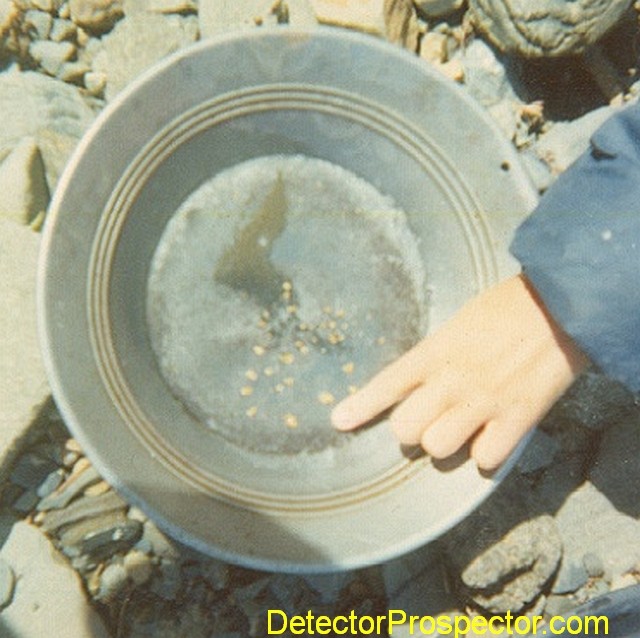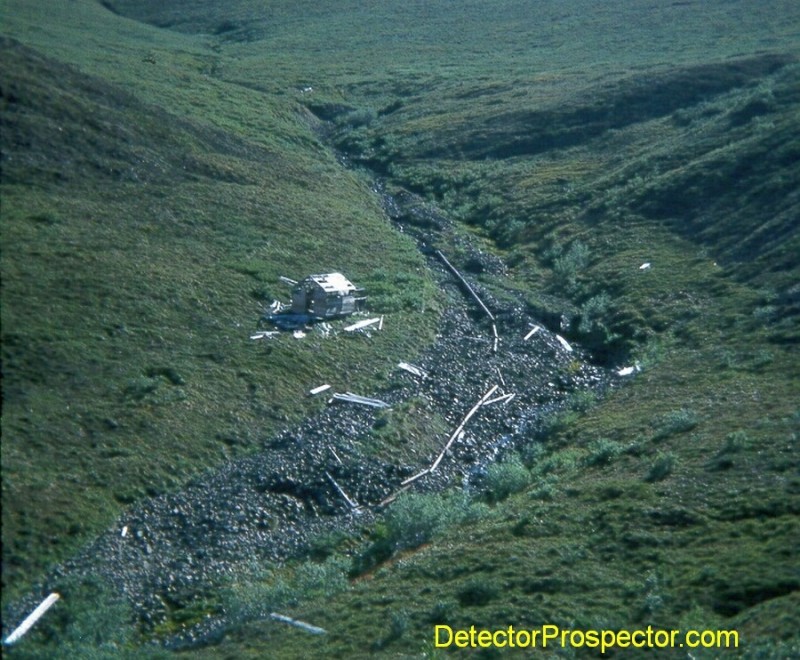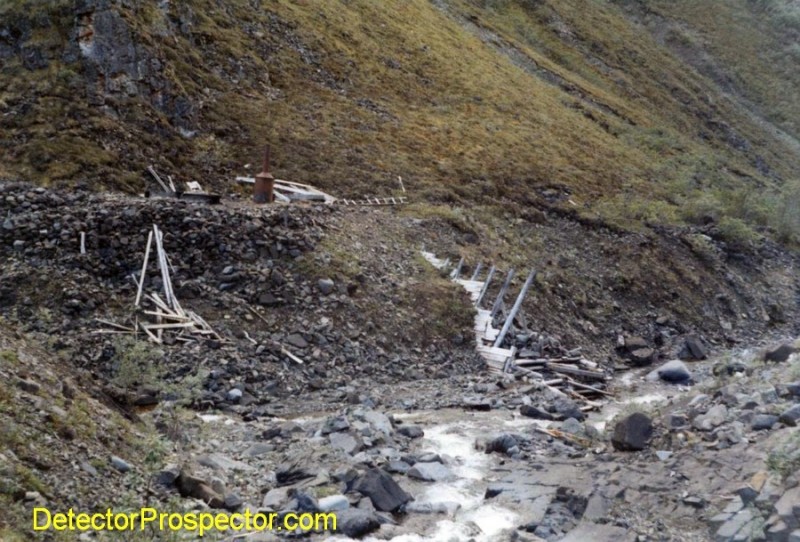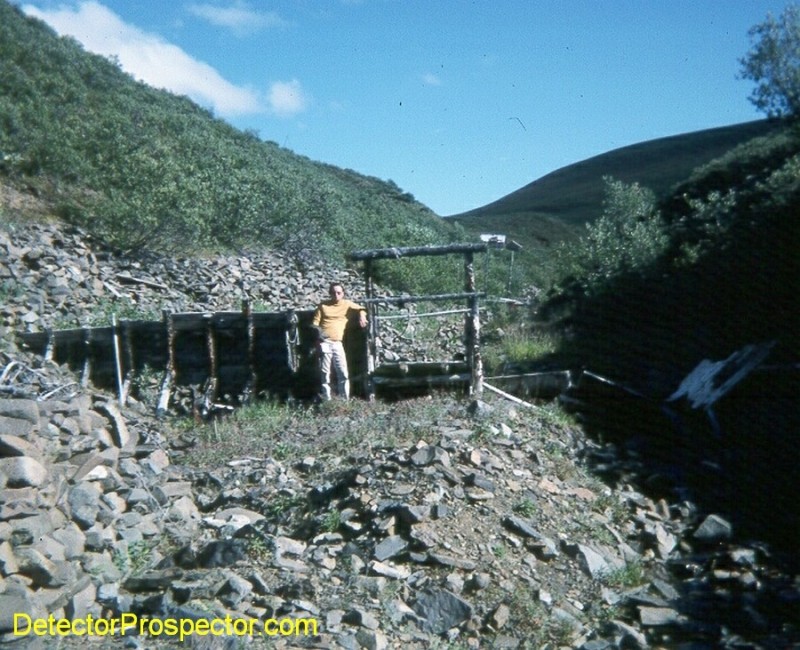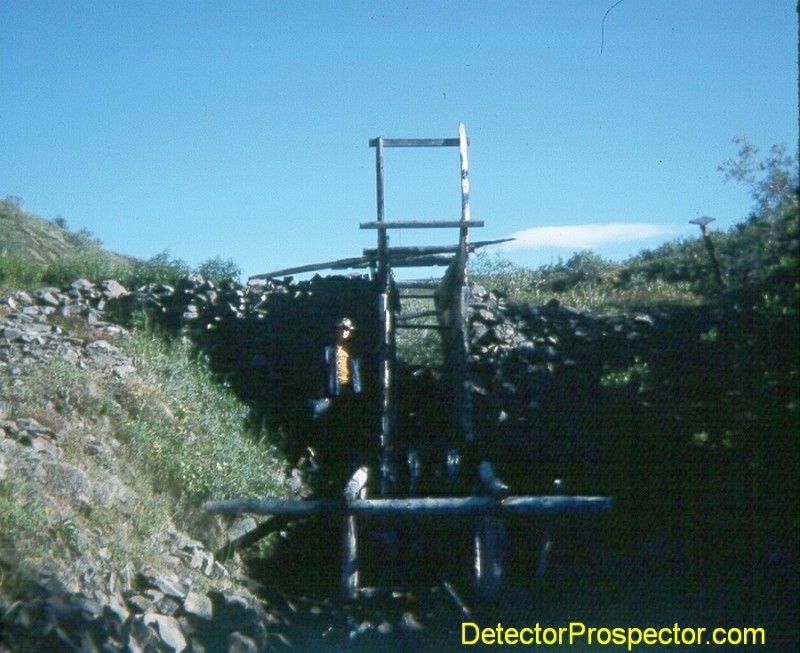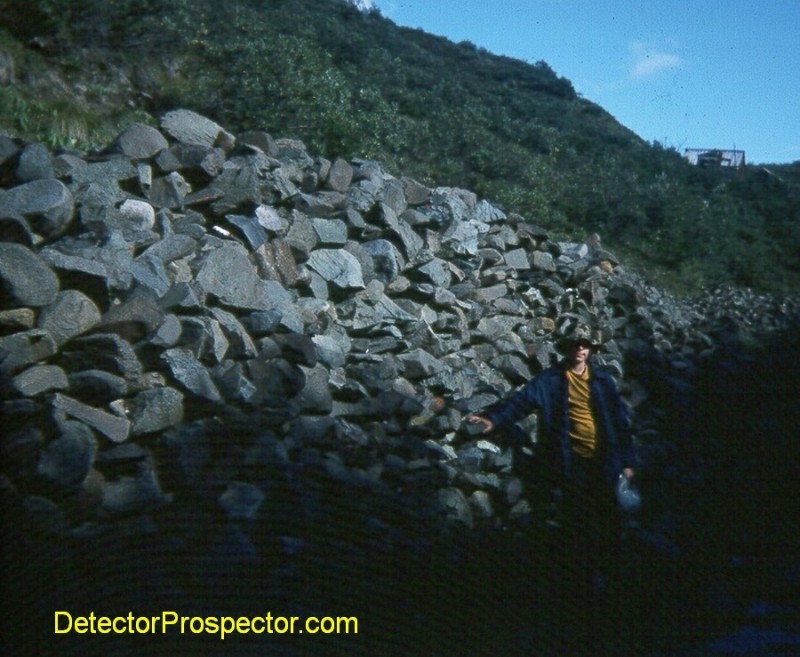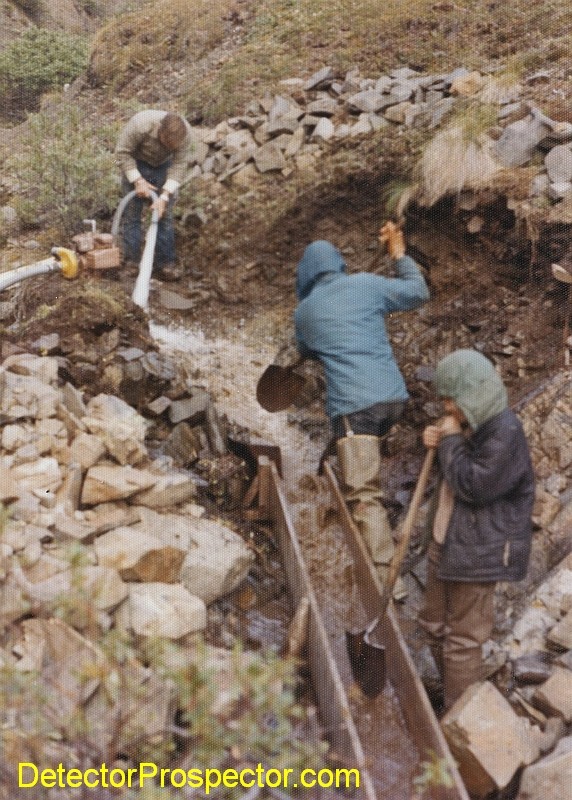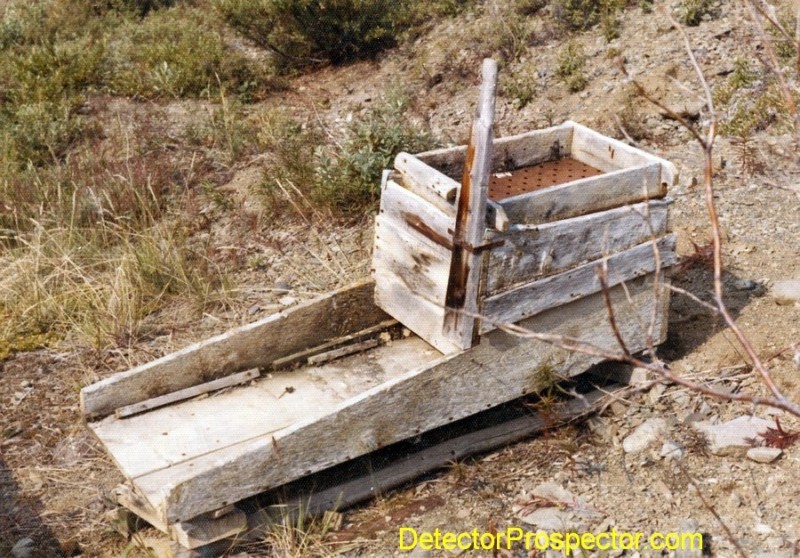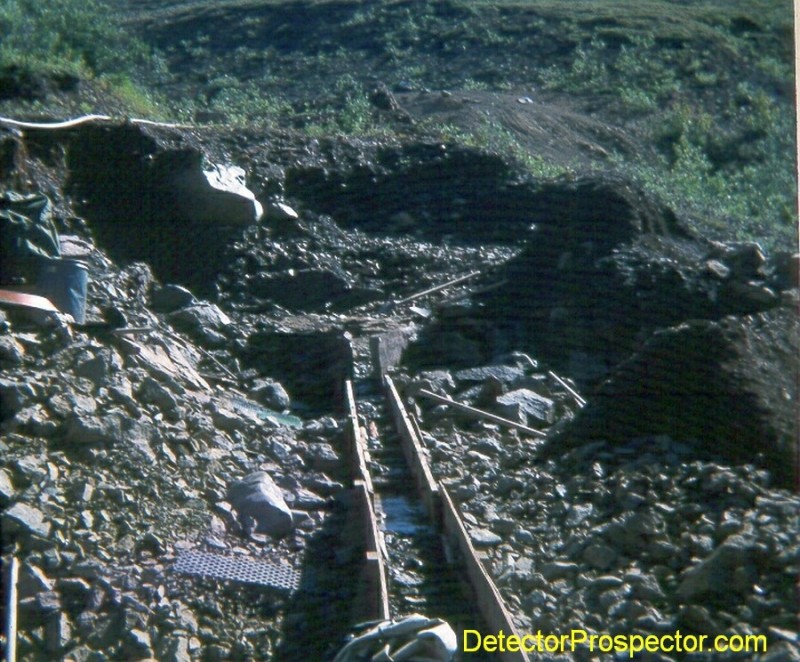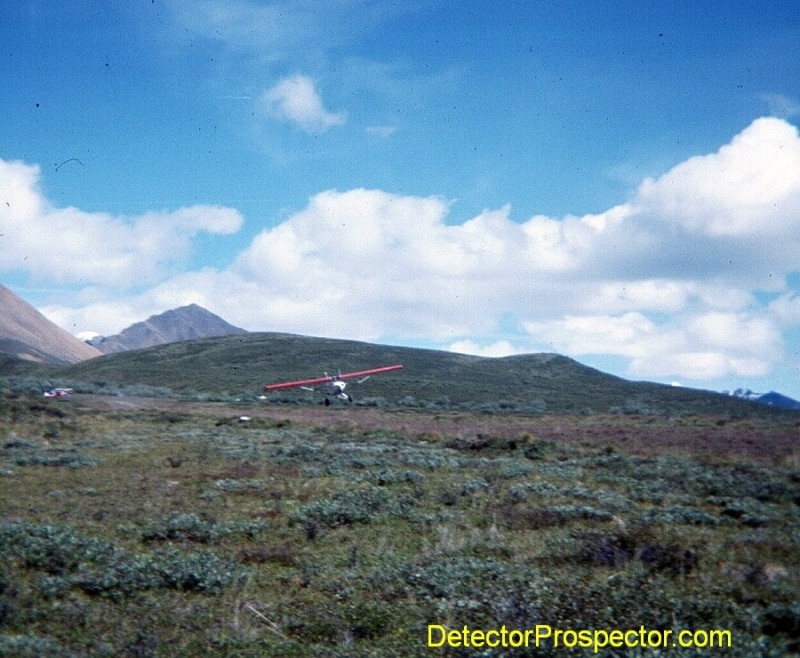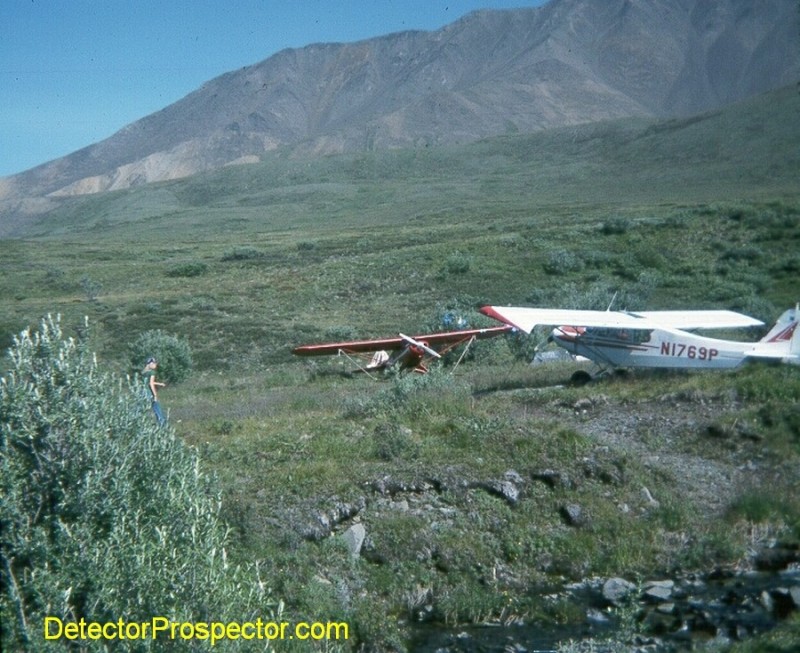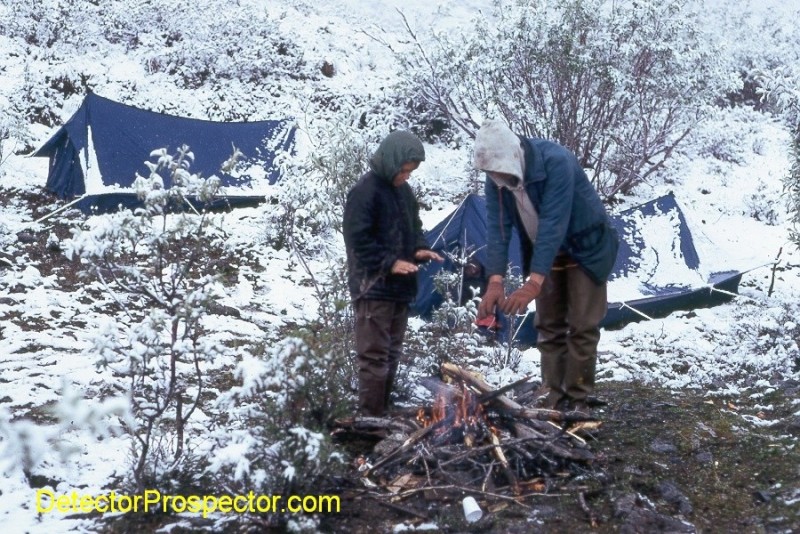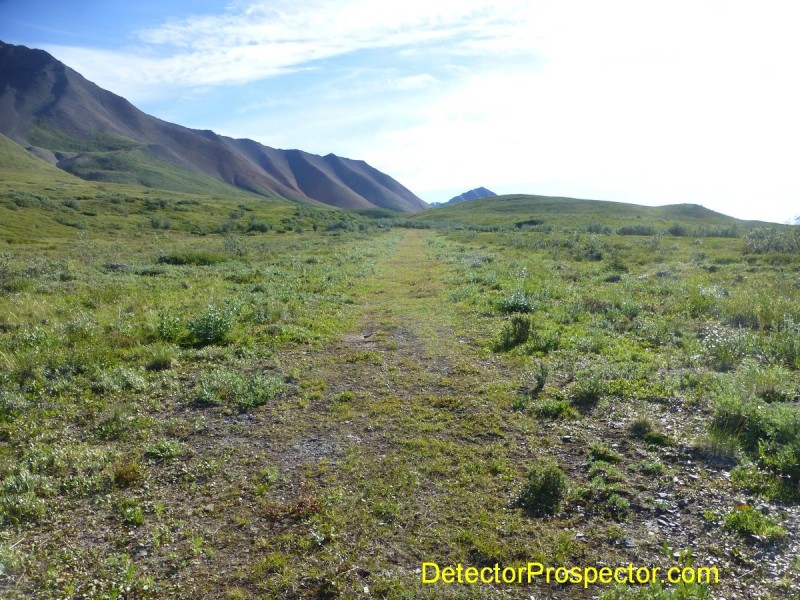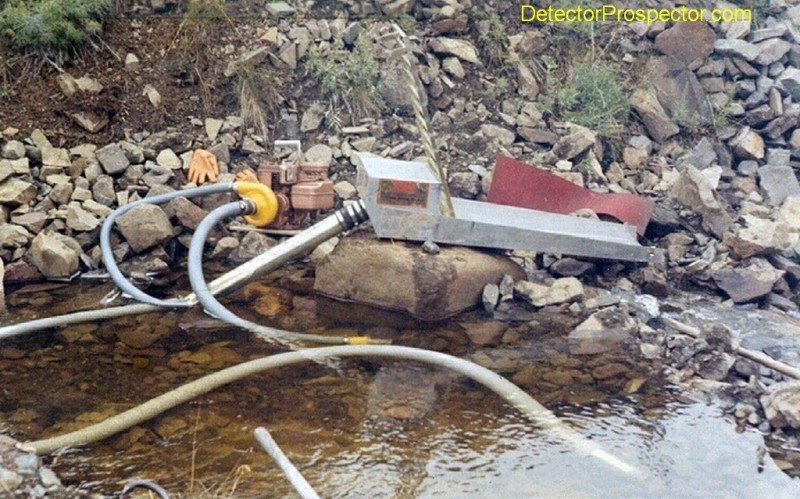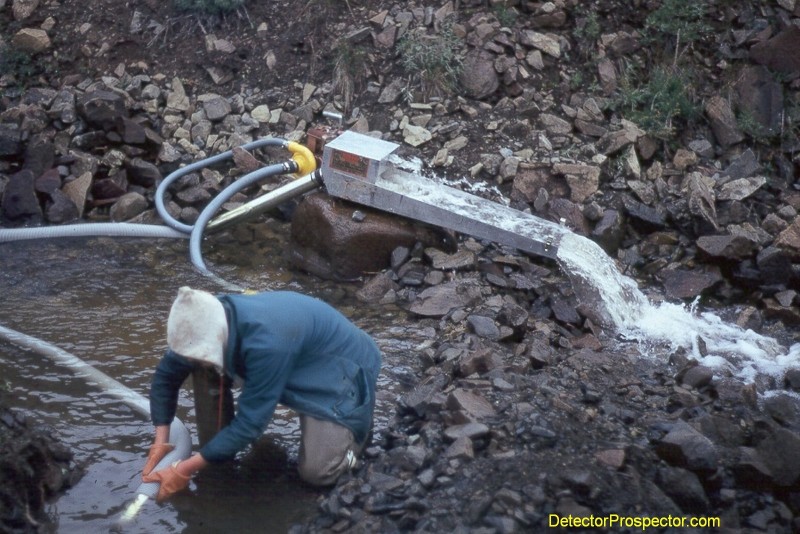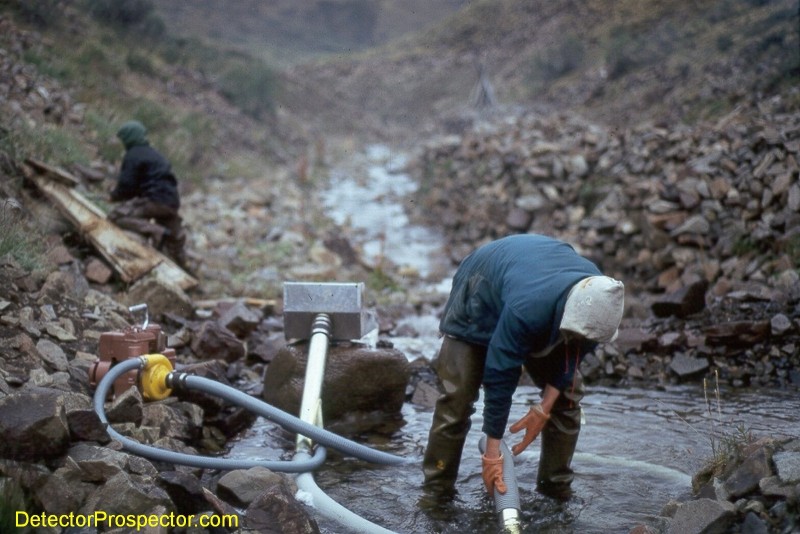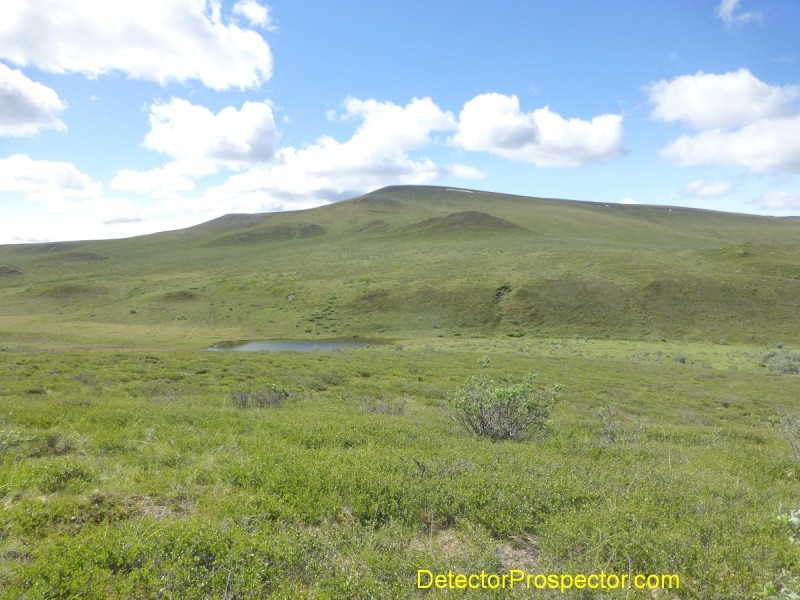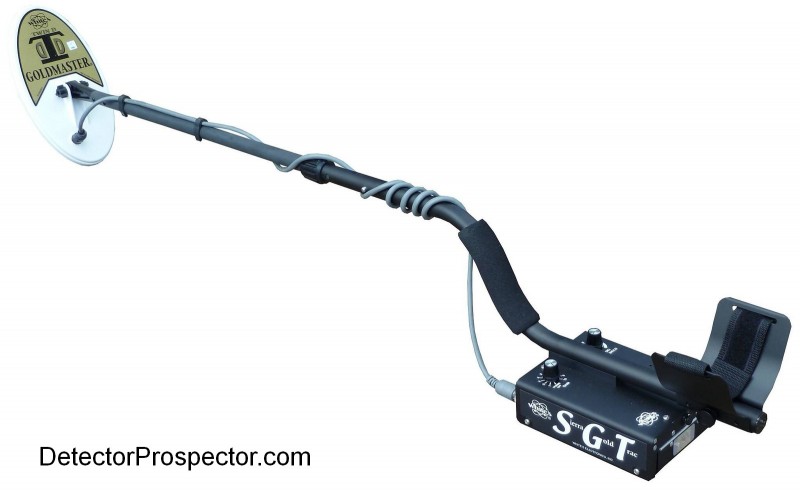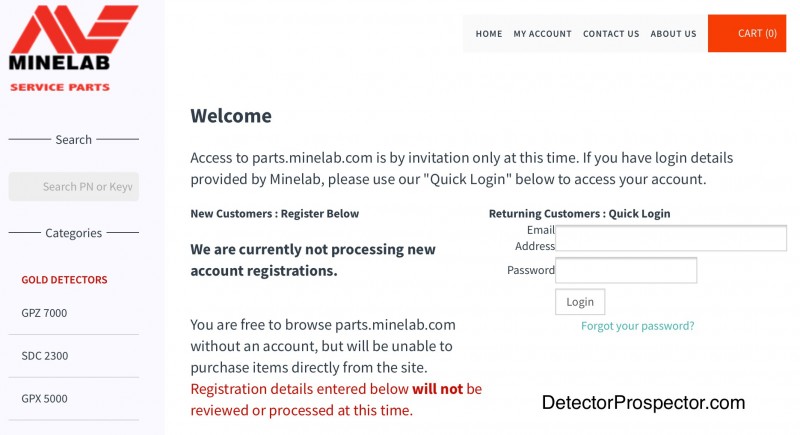-
Posts
19,777 -
Joined
Content Type
Forums
Detector Prospector Home
Detector Database
Downloads
Everything posted by Steve Herschbach
-
Hi Bill, I like a long-winded guy - great first post and welcome to the forum!!
-

Should I Sell The Xs And Replace
Steve Herschbach replied to Propjob's topic in Minelab Equinox Forum
Similar question here.... Personally I have a second Equinox as my “second detector”. The only two detectors that I find even remotely tempting as alternatives are the Makro Multi Kruzer and new Deus X35 version. But I am sticking with Equinox -

White's Sierra Gold Trac SGT
Steve Herschbach replied to Steve Herschbach's topic in White's Metal Detectors
I think if White’s had included simple ferrous discrimination in either the GMZ or SGT then White’s would have beat Minelab to the punch. The lack of ferrous discrimination capability seriously compromised the marketability of both models. Godfather of detecting? I am flattered but not even close. There are very many people more deserving of that title! -
I noted earlier that the first metal detectors I owned were before ground canceling capability was available. The detectors were next to useless for gold prospecting, and for a long time I only used a detector to hunt coins and jewelry. The first commercially available detector with ground balancing capability was the White's Coinmaster 5 Supreme. I purchased one of these new units in 1976. It was a very low frequency detector, and I found to my dismay that it really liked nails. One nice thing about the very old detectors was that they pretty much ignored nails, They Coinmaster 5 loved them and I was finding so many nails I took a dislike to the detector. But the depth of detection was amazing for the detectors of that time. I sold it to a friend who was a heavy equipment type miner. He found a gold nugget weighing several ounces with it at his mine. This should have clued me in, but once again I chalked it up to being a lucky find of a very large nugget. The kind that were lacking in my nearby hunting grounds. I went on about my dredging, sluicing, and panning. Finally in the 1980's I was selling Compass detectors in addition to White's, and I hauled a Compass X-80 up to my claims on Stetson Creek and gave it a try. It had the capability, as my tests on smaller gold nuggets revealed it was pretty good. We were selling them now as nugget detectors, and some finds were being made with them. Unfortunately, I was not lucky enough to find any gold with the X-80 the one time I gave it a try. And it just reinforced my feeling about detectors as being a waste of time. Steve Herschbach with Compass Gold Scanner Pro It was not until June 18, 1989 that I decided to give metal detecting for gold another try. Compass had repackaged the X-80 as a nugget detector called the Gold Scanner Pro. Here is my log entry for that day: "Went to Crow Creek and used Compass Gold Scanner Pro. Found my first gold nuggets ever with a metal detector! Two nuggets within 10 feet of each other between Area #1 and Area #2 below old tailing pile at lower end. One nugget at 9 grains and the other at 4 grains, total of 13 grains. Also found two bullets." I COULD find gold with a metal detector! It only took me 16 years to find my first nugget with one!! I was also reading a lot about the gold nuggets being found in Australia and the western U.S. with metal detectors, and realized the technology had come up to the task while I was not paying attention. My thoughts turned to places I might do well with a metal detector, and Chisana came to mind. I did some checking, and it turned out that the daughter of one of the original group of partners married a guy who then went about buying everyone else out. That made things easier as only one person now to get permission from, and I did just that. Plans were made and my father and I visited Gold Hill that July. I was also selling Fisher detectors along with Compass and White's. I set my father up with the new 19 kHz Fisher Gold Bug that had just come out. I was set on the machine that had already found me a couple nuggets, the Compass Gold Scanner Pro. Bud Herschbach with original 19 kHz Fisher Gold Bug and 3-3/4" coil We spent quite a bit of time on bedrock along Bonanza Creek before heading up to try the bench areas. We only found a few nuggets, and I now attribute this to the fact that most mining activity goes on near the water. People pan and sluice the material along the edge of the water, and dredgers work in the water. The area nearest the creek is the area receiving the most attention. One of the first things an experienced miner must do when getting into metal detecting is to lose this natural desire to stay near the water. What really makes detectors great is you need no water to find the gold, and so working away from the water actually will increase your odds of making finds overlooked by others. You have no choice in desert areas, but in stream valleys do not let the water distract you. Any exposed bedrock or material from the highest ridge on down has potential. Bonanza Creek has several ancient stream levels high above the current creek level. These are remnants of stream deposits left high and dry as the stream eroded deeper into the valley bottom. They can often be spotted as flat areas on the valley sides above gold-bearing creeks. In some areas there is more gold in the bench deposits than in the creek itself. The problem for the oldtimers was in getting water up to these locations to work the gold deposits. Ditches many miles long were often dug to bring water along the valley walls from places father upstream to the deposits. Bud Herschbach with original 19 kHz Fisher Gold Bug and 3-3/4" coil The old timers usually used "giants", a term for very large water nozzles fed by pipes with water from the ditch systems to wash the gold free of the hillside gravels. Large areas could be worked in this fashion, with the material being funneled into sluice boxes running down the hill. A lot of gold was lost in these sluicing systems due to the large volumes of material being washed through the primitive boxes. However the best target for the metal detector operator is not the tailing piles, but the large areas of bedrock exposed by these operations. Nuggets lodged in cracks and crevices as the material was being washed down the hill, and small concentrations of gold in the bedrock were often missed. The only way for the old miners to get this gold would be to tear up all the bedrock and process it. The amount of gold to be had for this extreme extra effort was not much compared to what they might get by just going on with their large scale washing operations. And so that gold is left to this day, waiting for someone to find it. Trying to scrape and pan crevices can produce some of this gold, but it is a needle in the haystack kind of search. Metal detectors are the perfect way to locate deposits of gold left in these old hydraulic workings and bench deposits. There are bench workings all along Bonanza Creek and we started detecting some of these. We started finding gold, but it was one particular hump of a dark slate bedrock that really started producing some nuggets. My years of coin hunting paid off as I had much better detecting habits that my father. I carefully scanned every inch of the bedrock hump. The bedrock was nearly vertical at one point, and as I scanned the face I got a nice signal. My father was about 20 feet ahead of me when I yelled at him to look at the flat 4 pennyweight nugget I popped out of a crevice in the rock! It turned out to the largest nugget of the weekend, and in fact the largest nugget I had ever found up to that point prospecting for gold. Results of Steve and Bud's first real nugget hunt! Gold Found by Bud & Steve - from my notes: Large Flat Nugget - 4 dwt 2 grain Fat Pendant Nugget - 2 dwt 8 grain Dad's Big Nugget - 1 dwt 5 grain Sitting Bird Nugget - 16 grain Chunky Nugget - 16 grain Long Flat Nugget - 14 grain plus others total of 11 dwt 6 grain Grand Total 1 oz 4 dwt 12 grain "Great weather, great gold, GREAT TRIP!" I had a fantastic time, probably the most fun I'd ever had looking for gold. I was finally able to put my metal detecting and gold prospecting together into one activity. And now that we knew there was gold to be found at Chisana with metal detectors we were sure to be back soon. To be continued... Old bench workings above Bonanza Creek
-
A quick specification comparison of the two detectors. White's Goldmaster Goldmaster 24K versus White's GMT White's GMT Instruction Manual GMT Information Page White's Goldmaster 24K Advanced Guide 24K Information Page Despite similarities these two detectors have a different lineage. The GMT was part of the effort involving engineer Dave Johnson that resulted in both the GMT and MXT. The Goldmaster 24K however I am almost 100% certain is an offshoot of the MX5 project, variants of which also include the MX7 and MX Sport. Notes on the chart above. The GMT has the ability to directly manipulate the ground balance up and down via the plus and minus buttons on the pod face. The Goldmaster 24K (GMK) relies on either automatic ground tracking or the ground grab, features the GMT also shares. However, the GMK has a ground balance offset feature. Under the section titled "Ground Scan" on page 15 of the White's Goldmaster 24K Advanced Guide: "In Ground Scan you can also set a ground offset by using the UP and DOWN arrows. This selection will affect the ground offset in normal search mode whether using XGB or locked settings." Note that the offset, once set, is active in both ground tracking mode and when using the ground grab function. Normally a manual ground balance is used to just tweak the setting derived from tracking or ground grab up or down a small amount. This can be done with the 24K but in a different fashion than the GMT. The fact the offset is active while in ground tracking actually gives the GMK an ability the GMT lacks. The Goldmaster 24K has a volume control the GMT lacks. A real biggie in my opinion is that the GMK can completely block the audio from ferrous targets. The best you could get with the GMT is an audio "iron grunt" on ferrous, but no way to shut it up. This is even more an issue when you get into some bad hot rocks that signal as iron. The GMT can get pretty noisy, but the GMK allows those signals to be blocked. It can in fact also block ferrous "wrap around" signals where ferrous reads very high on the scale, almost like a silver target. Coils compatible? That very important note is to warn you that all past Goldmaster/GMT coils are not compatible with the new Goldmaster 24K. Just another tip that these really are different detectors under the hood.
-

White's MX 7 Video Series
Steve Herschbach replied to Steve Herschbach's topic in White's Metal Detectors
White's MX7 - Full Options Rundown White's MX7 - 14K Ring Test White's MX7 - IP54 Testing -
White's MX7 - A Short Introduction White's MX7 - Ruggedness and Frequency White's MX7 - Quick Start
-

Nokta Invenio Fourteen Video Series
Steve Herschbach replied to Steve Herschbach's topic in Nokta / Makro Metal Detectors
This unit is more for treasure type detecting and archeological work than what most of us are doing. More videos http://noktadetectors.com/videos_invenio-metal-detector.asp -

Gold In Clay
Steve Herschbach replied to tboykin's topic in Gold Panning, Sluicing, Dredging, Drywashing, Etc
It's really just a matter of quantity. Unfortunately for small amounts working the material by hand is as efficient as anything. For larger quantities you can put the clay in a container like a 5 gallon bucket and use a plunger device to break up the clay. I have seen larger operations use cement mixers. From The Metallurgy of Gold by Sir Thomas Kirke Rose (1898): "The Puddling-tub. - When water is scarce, as was the case in many places in Australia where rich gravels were found, the long-tom is inadmissible, and the puddling-tub is resorted to. This is particularly well adapted for washing clays, and is still used to disintegrate lumps of clay encountered in sluicing operations. It consists of one half of a barrel which has been sawn in two ; into this the dirt is dumped and stirred up with water by means of a rake, until all the clay is held in suspension in the water, when a plug a few inches from the bottom is removed, and the slime run off. The operation is repeated until the tub is filled with gravel and sand to the level of the plug-hole, and this residue is then shovelled out and washed by the pan, the cradle, or by sluicing." Puddling tub in use: -

How Do You Store Your Nox Mode Info
Steve Herschbach replied to Propjob's topic in Minelab Equinox Forum
When I have to keep notes about something I use a notepad and pen. Many people these days probably use a phone app to take notes. I have never needed to keep notes just to use a detector but do keep notes when testing detectors. -

Need Help With Value Of Minelab 2200d And Accessories
Steve Herschbach replied to JM113's topic in Meet & Greet
They have not made the SD2200D for very many years, so many that Minelab will no longer service them. The battery is possibly dead and needs replacing. I am guessing value of around US$600 - $900 -
More on "Booming" from the U.S. Bureau of Mines I.C. 6786 (1934).... Booming Booming utilizes the increased cutting and transporting power of water under flood conditions. As pointed out, water is stored in a reservoir and then released, flowing for relatively short periods. At the beginning of the season, when high water prevails, the booms may occur frequently, and each one may last relatively long. As the supply of water fails booms occur less often until finally there is not enough water to operate. Booming is the most important type of ground-sluicing. A much larger duty can be obtained per unit of water by booming than by other forms of ground-sluicing. The increased volume of water carries boulders into the sluice that otherwise would have to be moved by hand or by power and breaks down the banks against which a smaller stream would be ineffective. Larger sluice boxes must of course be used when booming than when utilizing only the natural flow of the stream. Booming is used in running development cuts as well as in strictly mining work. Of the three strictly mining operations listed under this head a side cut was used in two and an overcast at the end of the pit in the third. The average number of booms per day at the five mines (excluding Ravano) ranged from 2 to 24. The duration of booms was 1½ to 30 minutes. The duration of a boom is governed by the size of reservoir and the flow of water. The capacity of the reservoir should be governed by the character of the ground. In heavy, rocky ground a short period with a correspondingly larger surge is more effective than a longer period with a smaller stream. In other ground, such as that at the Camp Bird mine, longer periods of washing, with correspondingly less water, give the best results. Reservoirs usually are constructed by building a dam across a narrow part of the stream bed or canyon and backing the water up behind it. Ordinarily, earth dams with a board facing on the upstream side are used. Reservoirs with capacities of ½ to 1¾ acre-feet (table 7) are used at the mines listed. Automatic gates have a double advantage in that no labor is required to operate them and the booming in the pit can continue 24 hours each day. Automatic gates are shown in figure 7. Although the water is not as effective when unattended as when the miners are on shift it accomplishes considerable work during off hours. Figure 7: Automatic gate boom dam
-
I got my first metal detector in 1972, a White's Coinmaster 4-TR. This was before ground balancing technology was developed. The older BFO (beat frequency oscillator) models of the 60's were just being supplanted by this newer TR (transmitter/receiver) technology. TR was unproven but I decided to go with it as the latest thing. A wise decision because BFO detectors were soon replaced completely by this new way of detecting. Unfortunately I proved something to myself quite quickly. White's sold an accessory item at the time, a 4" coil on a handle they called the "Gold Probe". My Coinmaster had an 8" coil and I got the Gold Probe accessory to hunt gold nuggets. Even with the small coil these old models could barely detect a 1 gram nugget sitting right on the coil. And even that bit of detection capability disappeared in bad ground due to the inability to ground balance the detector. Steve with first detector - White's Coinmaster 4-TR with "Gold Probe" White's also sold a detector at the time called the Goldmaster. The Coinmaster did not seem to be able to find gold nuggets, so I got a Goldmaster next. Being the inquisitive sort, I opened up the Coinmaster and Goldmaster and got my early lesson in detector marketing. The exact same circuit board was in each box! Basically when you got a Goldmaster you got a bigger box with a bigger meter, and that was "better". And seriously, Ken White Sr. believed exactly that - bigger meant better. In fact, White's sold three models that were all basically the same detector in three different boxes - the Coinmaster 4, Goldmaster, and the "Alaskan", a chest mount version. I still have one of the old Alaskan series with a Gold Probe, the exact model pictured in the 1976 catalog excerpt below. White's Electronics Coinmaster 4, Goldmaster, and Alaskan 1976 TR model detectors That early experience turned me off metal detecting for gold nuggets for the remainder of the 70's and in fact for most of the 80's I was biased against metal detectors as a nugget finding method. When I started selling detectors in 1976 my standard line was that a $5 gold pan was likely to find more gold than a $200 metal detector, and for nearly all situations that was true. You needed ground with coin size and larger nuggets to even have a chance with the detector. Therefore in the early visits to Chisana I did not do any detecting, but mostly just sniped around with gold pans and sluice boxes. Even a pump was only employed a couple times due to the difficulty of getting fuel on site. Since we were new to the area this was also the time to hike around and explore. The place was amazing back in the 1970's. There were Long Tom's (the old timer's long wooden sluice boxes) scattered everywhere, and shovels left right where the old timers last worked. Old cabins had plates and the shelves and cutlery in the drawers. Many places looked like the people left, planning to come back - and then never did. The area became popular with sheep and caribou hunters in the 80's, and anything that could be carted off slowly disappeared. The old sluice boxes were recycled for the wood or just burned for firewood. I do not have many photos from that time, and the following is a few that show what things looked like back in 1973-1975. First, here is a general location map. All the major gold bearing streams in the area center around a round top mountain called Gold Hill. The gold is conjectured to have been deposited in old Tertiary channels that were mostly destroyed in the last ice age. Gold Hill is a small area that was surrounded by a sea of ice, but which escaped direct glaciation. The rounded top of the hill is surmised to be made up of a remnant of the old Tertiary gravels. Click image for larger view. Gold Hill and surrounding gold bearing creeks Camp at Little Eldorado Creek There are several camps in the area. The oldest and best preserved is the camp at the junction of Skookum Gulch with Little Eldorado Creek. Little El, as it is called, is the creek in the foreground above. Skookum Gulch is the little drainage coming down behind the cabins. The main cabins here were built around 1916 and have been in use more or less continuously ever since. Looking down Little Eldorado Creek to where it joins Bonanza Creek below Old "Long Tom" remnants on Skookum Gulch Upper end of mine workings on Skookum Gulch Like I said earlier, this was before I got into seriously detecting for gold, so all the gold we recovered was by panning and sluicing. My brother and I found a patch of blocky bedrock on Bonanza Creek that had gold. It was just the two of us, a couple gold pans, a pry bar and some spoons. Sorry for the poor photos, but each of the pans below are single pans of dirt scraped out of crevices and then panned. As you can see the gold is chunky, and the two of us panned over an ounce of gold that day off the patch of bedrock. In case the reader does not know it, anywhere a couple people with just pans can find over an ounce of gold in a day is very rich ground. We even found nuggets just walking the creek and eyeballing the bedrock - here and there nuggets would peek out of a crevice, ready to be pried out and placed in a bottle. Bedrock next to Bonanza Creek Gold nuggets in 14" plastic pan Gold nuggets in 12" steel pan Old cabin and hydraulic workings on upper Gold Run Creek (possibly Poorman Creek) Boom dam and steam boiler on lower Gold Run Creek A lot of the mining in the area used a method called "booming". This involved building dams to retain the water, and then periodically letting it all go to create a brief flood event. The dams could be released manually, but often were constructed with automatic gates so they could run unattended. Between flood washes, miners would enter the cut below the dam and stack all the large rocks to the side. The next flood would wash away the finer gravels materials, while gold settled lower and lower. Finally, when only a couple feet of enriched material was left, everything would be shoveled into sluice boxes and bedrock cleaned. This worked particularly well for areas with coarse gold and where gold is mainly concentrated on bedrock, with relatively barren overburden. An alternative was to use the impounded water to flush material into sluices set lower down the creek. This was the better way to go if the overburden had a lot of gold. At Gold Hill it appears booming to simply strip the overburden and then shoveling into boxes was more common. More complete remnant of a wooden "boom dam" Automatic gate boom dam; dam itself made of hand stacked rock (upper Gold Run) The channel at Gold Run is so narrow that the rocks were stacked along both sides as high as a man could reach. Walking up the creek at this point is like walking up a narrow passageway in a castle - rock walls on both sides. Hand stacked rock on Gold Run Creek An old rocker box Another little gulch that enters Little Eldorado Creek is called Snow Gulch. There was another hot spot there, and we used the pump off my 3" dredge to help wash material through an old wooden sluice. Again, lots of nice fingernail size nuggets recovered. Ground sluicing on Snow Gulch The partners working the ground at the time were using similar primitive methods - usually just a little pump supplying water to hand work a mining cut with old sluices found on site. "Shovel into" operation on Bonanza Creek What happens when you stay too long..... N1769P parked on dirt strip near Gold Hill Dad takes off ferrying people and gear back out of the mines The fact is those were early days. I only have a smattering of photos and slides from Chisana in the 1970's, and my memories have faded with the years. All the above happened in the 1973 - 1975 time frame. By 1976 my school chum Dudley Benesch and I had founded Alaska Mining & Diving Supply, the same year we were graduating from high school. Don Dipple, who I met because of Chisana, clued us onto a creek nearer to home, Stetson Creek, that ended up taking over from Chisana as my main place of interest in the late 70's and early 80's. It was not until 1989 over a decade later that I was to return to the Chisana area. The reason? New metal detector technology! To be continued...
-
Unfortunately that is normal with many detectors. Metal detectors work best on coin size type targets. Certain large steel items can read like coins. Washers, hardened steel bolts, flat sheet steel, and yes, fence wire can all tend to give high coin readings. The reality is these type targets are usually giving off both low and high signals. However, many detectorists block / reject / notch out the low end iron signals. This lets only the high tone portion of the signal sound off. The key often is to make sure you engage the iron portion of the signal so you hear both the high and low tones.
-

White’s Australian Dealer?
Steve Herschbach replied to Steve Herschbach's topic in White's Metal Detectors
Saw this post on another forum... "The Goldmaster 24k will be available at Maldon Gold Centre very soon." -
For most detectorists it is simply the thrill of the hunt, and finding something that is challenging to find. And personally I don't see how anyone would not be excited to find a rock that fell out of the sky! Yes, finds, if recorded properly, can be registered and added to the worldwide database of knowledge regarding meteorites. And finally, some finds can be worth a lot of money. Meteorites normally sell by the gram. Large finds can be worth a small fortune.... http://www.foxnews.com/science/2018/02/16/arizona-meteorite-fetches-record-breaking-237500-at-auction.html
-
I am glad to hear Dave is still at it! I shipped him a lot of gear over the years. If anyone can get your son-in-law onto decent gold it’s Dave. I hope they do well.
-
Hey Bob! My fathers Cub had smaller tires if my thinking is right. I have seen those 36” tires and they are crazy tall. I am thinking ours were more like 24” - 28”? Anyway, we had some good times at Mills! Thanks for any help you give John. ?
-
Nope, I was a mere tyke Harry. I remember the old crank phone more for what happened to it later. It sat around in a shed and my friends and I played with it electrocuting each other by turning the crank while holding the wires. Funny what makes for a toy when you have to make your own!
-
The main problem with a Super Cub is the lack of cargo space. Fuel can also be a problem in Alaska, and you often have to bring your own. That being the case the best way to access the Chisana area is by driving supplies up the highway into the Slana area, and then ferrying out of there into the mines. From Slana a person flies southeast towards Nabesna and through Cooper Pass. Nabesna is closer but the airstrips there are private. The old boom town of Chisana is in the valley down below the gold creeks, and has been more or less continually occupied until the present day. There is a very large airstrip there but no facilities or stores, just some private residences. We always bypassed Chisana and flew straight into the mines, and only used the Chisana strip if weather at the higher mine elevations forced us to land and wait for better conditions. The desired destination is a small dirt airstrip near Gold Hill, the small mountain that many of the gold bearing streams center on. This is a classic Alaska bush strip, just a cleared area running at quite a bit of uphill slope into the side of a mountain. It is basically a Cub strip but can handle planes as large as a Cessna 206. Even with a Super Cub it is an exciting airstrip to work out of. Due to roughly 5000 foot elevation and the angle of the strip into the mountainside, a pilot basically has exactly one shot at getting the landing right. A Cub might be able to power out of a failed approach if it was aborted soon enough, but it would be a risky thing. The entire area is above treeline, with only some sparse willow growth in a few areas. Here is a view of the landing strip from the bottom looking up. The uphill slope is considerable, like maybe a 15% grade at a guess. Landing strip near Gold Hill, Alaska The closest creek to the airstrip that the records mention as being rich in Gold is Skookum Creek, some distance away over typical high altitude tundra. From the 1916 report "The pay streak was narrow, averaging only 6 feet in width, but was unusually rich." and "The gold occurs for the most part upon bedrock and is very coarse, little fine gold being recovered. The largest nugget found had a value of $52, and pieces worth from $10 to $20 were numerous. The gold is said to assay $16.50 to the ounce." My plan was pretty simple. Fly my new little 3" gold dredge into the airstrip, then pack it the couple miles to Skookum Creek and go find some gold. Now, keep in mind that at this point in the spring of 1973 all my mining experience boiled down to some panning and sluicing at Bertha Creek. I maybe had 100 flakes of gold in a vial weighing less than a quarter gram total! I don't remember anything in particular that proved a particular challenge on this first trip. The main thing is that due to the elevation, there is a very short season on Gold Hill. June may or may not have too much snow on the ground and so is a risky month to go in. By July it is pretty much guaranteed to be melted out. Serious snow can be expected sometime in September. So about 4 months max but really only July and August can be counted on at the higher elevations. Lower Bonanza Creek is over 1000 feet lower and has a longer season. We pitched a camp at the airstrip, and packed the 3" dredge down to the head of Skookum Gulch. Since we were backpacking everything I picked the first decent bedrock exposure I could find that had a decent place to set up. I was already learning getting a powerjet stye dredge with no floats may have been a good idea when it comes to saving weight and bulk. The problem is since the junction of the jet and hose must be at or below water line finding a place to set up in a shallow creek can be a real pain. This nicely placed rock had a lot to do with this being the location I chose. Steve's first gold dredge, a 1973 Keene 3" with no floatation And here are a couple more shots. You can see that Skookum Gulch is just a narrow little thing with very little water, and in fact it dries up often in a low water year. You can see bedrock in the water in the picture above - blocky granitic rock heavily fractured by thousands of years of freeze/thaw cycle. The oldtimers tore up as much as a dozen feet of this stuff in places. The gold seems to never quit - it just gets smaller the deeper you go into the bedrock. Steve working 3" Keene dredge on Skookum Gulch in 1973 View looking down Skookum Gulch - my brother messing with an old sluice box in background I cleaned off a nice little patch of bedrock. I got a little bit of fine gold, but was thrilled to find a nugget weighing maybe a pennyweight (1.5 grams) that was not only the largest nugget I ever found, but probably weighed more than all the gold I had ever found at this point! Here is where things get funny. It never in my wildest dreams occurred to me that this remote location with early 70's low gold prices might have mining claims. I was a rookie still and had not found out yet that even when gold was $35 an ounce people still were mining gold around Alaska, and that historic old areas often still had active mining claims. At some point we took a break and wandered down Skookum Gulch around that corner you can see in the last photo above. It was there we saw a couple people working a sluice box in the creek. Yikes, we might be claim jumping! Being older and wiser now I would have just went and talked to the people. However, I basically just freaked out and decided to evacuate post haste. We packed everything back to the airstrip and called an end to this first adventure. I was understandably disappointed. I don't remember how it happened, but Alaska was a much smaller place in those days. Inquiries were made, and we contacted one of the claim owners, a gentleman by the name of Don Dipple. Long story short Don did not mind some kids playing around looking for gold if we flew in some goods for him also when we came in. My father has never been much on finding gold per se - he did it mainly because I wanted to - but he was interested in caribou and sheep hunting in the area. We basically had permission to come up and play around going forward. It turned out to be more complicated than that. There were several partners in the claims, but due to some dispute one half of the group was not talking to the other half. Yet everyone was always nice to us - I think they liked seeing youngsters taking an interest in something that at the time was the province of an older group of people. Regardless, the stage was now set for visits in future years. To be continued... View of Gold Hill
-
White's Electronics is having their fall Garage Sale that features some deep discounts on select products. There is one deal in particular that nugget hunters may want to be aware of. The White's Sierra Gold Trac was a Jimmy Sierra limited edition product not carried by regular White's dealers. They were only sold by a few west coast dealers and White's themselves never really promoted the machine. That makes them a rare item, and with Jimmy now having left the scene it looks like White's wants to liquidate the remaining units. I only bring this all up because the SGT is basically a stripped down White's GMT with only two control knobs - on/off/gain and threshold. That's it. the detector runs at 48 khz and is locked full time into ground tracking mode. There is no discrimination. Just a hot on tiny gold all metal detector. I did up a product page on these for historical purposes since there is so little information on them. Normally sells discounted for $369.95. White’s Sierra Gold Trac (SGT) Data & User Reviews Review by Mike Hillis White's Electronics Sierra Gold Trac Metal Detector All Metal Operation: Hear all metal targets. Auto Trac: Iron mineral interference from soil and rocks is tuned out automatically. Only Two Controls; Gain & Threshold: Threshold adjusts the background hum. The Gain control adjusts for maximum sensitivity in your conditions. 48 kHz Frequency. Waterproof 6x10" inch Elliptical DD Search coil. Slide-In 12 Volt AA Battery Holder: 25-40 hours of hunting. (varies depending if you're using headphones or the external speaker) Approximately 3.5 lbs with batteries: The SGT is light weight and well balanced for all-day hunting. Can be used with any Goldmaster Series (48 kHz - 50 kHz) Search Coils. Optional Accessories (Sold Separately): NiCad Rechargeable Battery System Two Year Transferable Warranty MSRP $399.95. White's Sierra Gold Trac Owner's Guide White’s Sierra Gold Trac (SGT) Data & User Reviews
-
I agree - just being able to see a parts breakdown and get part numbers is a great thing. Hopefully the site will allow for customer parts sales in the future but dealers usually fight that sort of thing since it cuts them out of the loop. It may be this is a dealer only site “by invitation only”.
-
Kind of handy but odd. The site was first noticed just over a year ago. It looks like a fantastic effort to make parts easily obtainable for Minela detectors. Only problem - no progress in last year that I can see. You still can’t register with the site to gain acesss for ordering.

